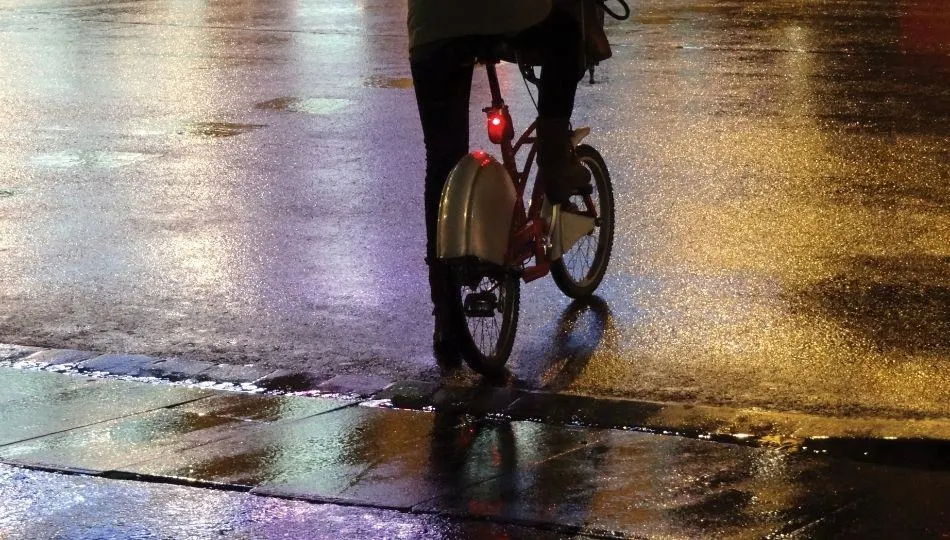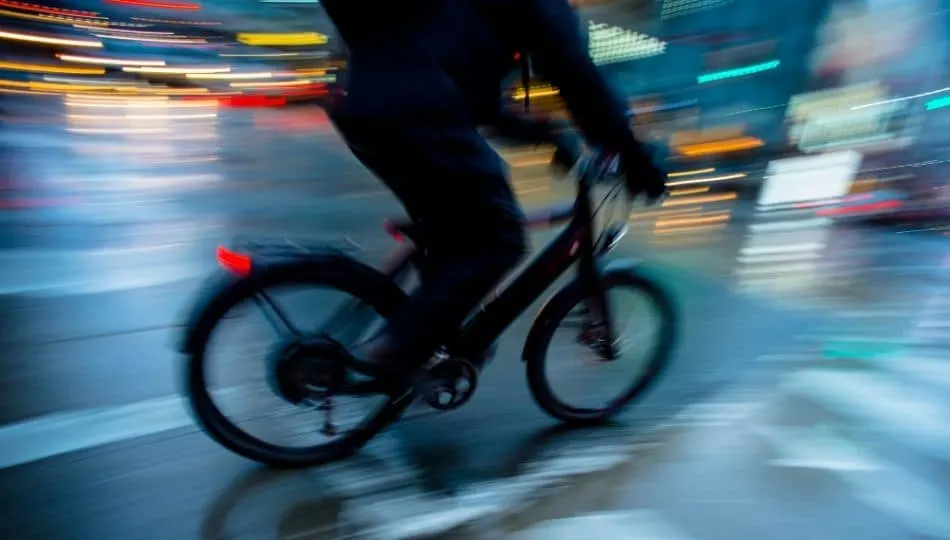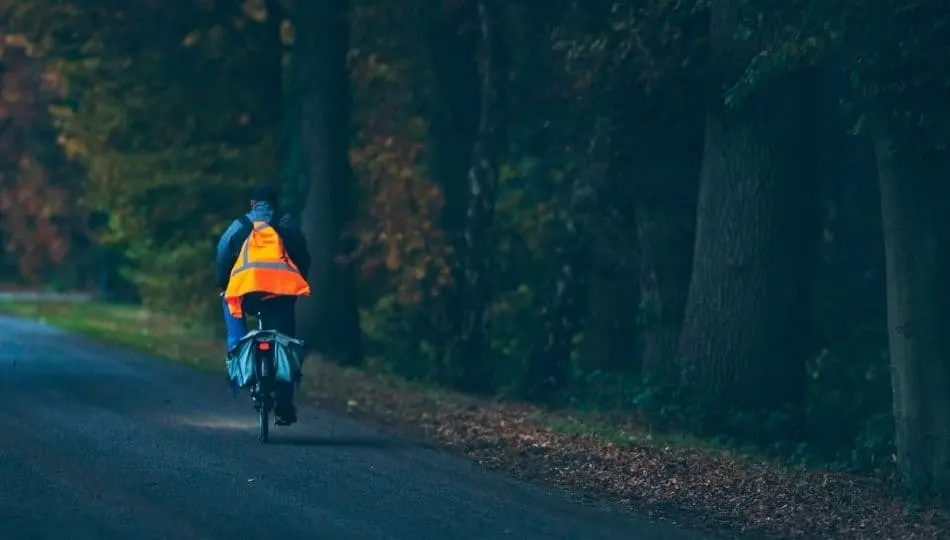
For many, their main usage of the bicycle comes with running errands, exercising, and commuting during the day. But there may be situations when you have to cycle at night sometimes. If it is occasional, you may be wondering if it’s okay (or even legal) to ride at night without lights.
In order to maintain the utmost safety for all parties on the road, it is mandatory that each and every cyclist has a source of light. In other words, it is mostly illegal to ride at night without lights in many countries across the globe, including the USA, the UK, and Canada.
While it is generally considered compulsory that night-cyclers use lights, there are actually many things you should consider if you plan on cycling at night. And if you don’t have lights, there are some alternatives you could use. Here are some tips to becoming a night-cycling connoisseur, and also what you can do if you don’t have the right lights, but need to cycle at night…
Can I Cycle at Night Without Using Lights?
While it varies from state to state, province to province and country to country, it is generally illegal in the majority of cases. In actuality, it is even illegal — in many places — for you to cycle without lights, even during the morning, afternoon, and evenings. Safety should always be your number one priority.
The requirement of bicycle lights greatly lessens the chance of traffic accidents at all times of the day. I will be going through the laws surrounding bicycle lights in Canada, the U.S., Australia, Germany, the UK and France.
In Canada, the law states… when you ride on a road any time half an hour prior to sunset to one hour following sunset and at all other times where there is insufficient lighting on the road or low visibility due to weather conditions, every bicycle must carry a light source. There must be a white or amber light source on the front of the bicycle and a red light source at the rear.
Furthermore, Canada mandates that this light source be used in conjunction with white reflective material to be placed at the front of the bicycle and red reflective material on the rear of the bicycle that covers a surface area of no less than 250mm x 25mm. The set fine for violating this law is $110 CAD.
In the US, the law states that… bicycles must be equipped with specific safety gear. This includes a white frontal light source that can be visible from a distance of at least 500-600 feet away (varying from state to state) and a red or amber rear light source that can be visible from 300-500 feet away (also varies from state to state). This light can either be solid or flashing. In some states, this is only required in low visibility conditions and at times between sunset and sunrise.
Like Canada, some states also require reflectors; bicycles must have a red rear reflector, a white frontal reflector and even pedal reflectors. Some mandate that the cyclist has a reflector on each pedal, each shoe, or each ankle. Furthermore, there must be one red or white reflector on each side of the rear of the bicycle. It is also highly recommended that cyclists wear reflective clothing when riding in low-light or low-visibility conditions.
In Australia, the law states that… cyclists must not ride at night or in low-visibility weather conditions unless the bicycle displays a white frontal light, a red rear light, and a red rear reflector. Both the light sources and reflectors must be used in conjunction in low-visibility conditions. However, the government still very strongly recommends that riders use bicycle lights even during the day.
According to a recent study, 80% of bicycle accidents happen during the day. At the same time, using a rear light source makes a rider 2.4x more visible to other parties on the road compared to those who do not use such a light source.
In France, the law states that… cyclists must use a position lamp that produces a forward-facing, non-dazzling white or yellow light regardless of the time of day — when visibility is insufficient. The bicycle must also be equipped with a rear-facing, non-dazzling position light. Furthermore, each cyclist must also have at least one front-facing white reflector, one rear-facing reflector, two lateral orange reflectors, and two orange pedal reflectors.

In the United Kingdom, the law states that… all cyclists must have approved front-facing and rear-facing lights that are lit, clean, unobscured and working as intended between sunset and sunrise. The bicycle light laws apply not during the hours of darkness, but rather 30 minutes prior to sunset and 30 minutes after sunrise — similar to the laws in Canada. While flashing lights are allowed, the frequency of flashing must reside between 60-240 times per minute.
There must be a front-facing white light and a rear-facing red light — like all other countries — that are attached to your bicycle and can be easily visible. The light sources cannot be obscured by saddlebags, accessories, or anything for that fact. It also specifies that only a light source attached to your body or head is not sufficient to meet the requirement of the light regulations. However, unlike other countries, these lights are not required during the day, even under low-visibility conditions.
Reflectors are also required, but like the light sources, are only required between sunset and sunrise. Bicycles must have one rear-facing red reflector, four amber pedal reflectors (two per pedal). Again, unlike other countries, one cannot replace an amber pedal reflector with a foot, heel or ankle reflector. This does not meet the requirements.
In Germany, the law states that… all bicycles must be equipped with a non-blinking, front-facing, white or pale yellow light source. A rear-facing red light source is also required; it must stay light when the vehicle becomes stationary and may blink. Note that although blinking lights are allowed in most countries, it is illegal in Germany. Light sources must also be attached to the bicycle.
One white reflector on the front of the bicycle, one red reflector on the rear and at least one orange or yellow reflector on each wheel are required. Like the UK, Germany does not require any bicycle lights during the daytime.
Tips For Choosing the Right Light For Your Bicycle
The most important rule when choosing a light source for your nighttime bicycle journey is… do not choose too bright of a light. You may be asking though, “how bright is too bright?” Well, that is fully dependent on where you are planning to cycle.
The main issue that arises if your light source is too bright is that it may blind oncoming vehicles and drivers. This creates a very dangerous situation. Although they know that there is a bicycle in front of them, they do not know how far you are away from them, nor your position on the road.
While there are no laws regarding the required brightness of your light source, there is usually a recommended scale you should abide by. Ensure that you check for these numbers before making a purchase. If you are planning on cycling in urban areas with streetlights along your route, your bicycle light should be approximately 50 to 200 lumens.
If you are planning on cycling in rural areas, where streetlights are either scarce or not available, your bicycle light should be approximately 400 to 600 lumens. On the occasion that you plan on cycling at night on remote trails, where you find yourself in a pitch-black environment, your bicycle light should be greater than 600 lumens.
One more tip for you… consider using USB-rechargeable light sources. Firstly, they are usually brighter than regular bicycle light sources, allowing for further visibility. Secondly, this allows you to recharge your light with a power bank or whatnot in the case that it runs out of battery. Just remember to bring an extra light source in case your current one fails or breaks.
Tips To Keeping Myself Safe When Cycling at Night
Aside from using sufficient light sources, there are many steps you can take to ensure your safety when you cycle at night. Remember to follow every single step… do not be lazy! In most cases, many officials even suggest that you avoid riding your bicycle at night because it is significantly more dangerous than riding during the day. However, do not worry! Here are some tips for staying safe during your nighttime journey…
- Plan Out Your Trip
Unless you are planning for a “joyride”, you want to make your nighttime cycling trip as quick and efficient as possible. Also, because your visibility is drastically lowered during the hours of darkness, figuring your route as you go will be more difficult. Likewise, you should aim to navigate roads that have streetlights or are well lit.
Not only does it make it easier for you to cycle, but it makes it easier for other vehicles on the road to see you. If possible, try to take routes that have designated bicycle routes Evidently, planning out your journey beforehand allows you to more confidently traverse the nighttime roads.
- Wear Reflective Clothing
Although the bicycle light regulations stated above does not mandate the wearing of bright or reflective clothing, it is highly recommended. This makes you more visible to others within your surroundings.

- Use Hands-Free Technology
If you plan on regularly cycling at night, consider investing in external technologies that can attach to your bicycle. For example, there are purchasable “radar systems” that alert you when a car is coming up behind you or that there is another vehicle near your blindspot.
- Walk When Needed
Do not be lazy! When you need to navigate through an area without any light and visibility decreases from little to none, it is highly recommended that you get off your bicycle and walk. Take your time! Better safe than sorry.
- Obey Traffic Laws
While this is self-explanatory, it is especially important at night. Even if you are in a rush, obey all traffic laws. Do not cross the street during a red light, do not ride in the middle of the road, etc. Although it is true that there will be fewer cars on the road during the nighttime, you are also significantly less visible to the occasional car that drives along. Do not take the risk!
- Perform Regular Maintenance on Your Bicycle
Ensure your bicycle is in good shape if you are planning to ride at night. Before leaving, remember to check the tires, pedals, chains and gears on your bicycle. Fixing a broken bicycle in the middle of the night in almost pitch darkness is incredibly difficult. You have little space to work with and other vehicles may not see you, increasing the chances of roadside accidents.
- Remember to Bring the Necessities
Depending on where you are located, the temperature at night is generally significantly lower than the temperature during the day. Make sure you are dressed for the occasion. Even if you think that you will warm up during your ride, plan to wear more than you need. While you can remove a layer if you feel too warm, you can do nothing if you feel too cold.
Check the weather forecast before you leave! Unlike driving a car, you are vulnerable to the weather. Bring a raincoat or umbrella if it is going to rain. You may even want to consider bringing along a spare pair of socks or even a spare change of clothes.
Remember to bring your phone! Even if you plan your route or journey beforehand, it is still easy to get lost in the dark. Not only can your phone be used as a global positioning system (or GPS) and flashlight, it can also be used to call for help in the case of any accidents or unexpected occurrences.
Consider investing in safety glasses. These keep your eyes protected from wind and debris, preventing anything from impeding your vision, which is already greatly suppressed during the night.
- Check for Traffic
Although there is less traffic on the road at nighttime, always check and look carefully before crossing intersections and such. Do not only take a quick glance! It may take longer to spot a distant vehicle.
- Do Not Wear Earbuds or Headphones
Wearing earbuds or headphones over both ears prevent you from hearing incoming traffic or distant sirens. Make the best use of all of your senses.
- Consider Using Helmet and Handlebar Lights
Although it is not required by law, it is always recommended that you remain as visible as possible to others on the road. This greatly diminishes the chance of any traffic accidents.
- Do Not Ride Too Fast
Not only does it allow other drivers to react to your presence, but it also gives you time to react to any obstacles or changes in the path ahead of you. Do not outspeed your light!
- Bring an Extra Light Source
In the case that your current light source on your bicycle fails, a backup is required. Do not take the chance! Navigating in total darkness is nearly impossible.
- Wear a Helmet
In many countries, adults are not required to wear a helmet — only children under the ages of 18, 16, and 14 are required to by law. Nonetheless, it is still strongly recommended that you wear a helmet on this nighttime journey. In the case that you get into any type of accident — knock on wood — your head will be protected.
According to statistics, only 17% of people wearing helmets are fatally injured during bicycle accidents, while just over 54% of those fatally injured were not wearing helmets (the other 29% of accidents are unknown). The number of deaths of cyclists younger than 20 years of age has declined 88% since the implementation of helmet laws in the late 1900s. On the other hand, the number of deaths of cyclists over the age of 20 has almost tripled, since older cyclists are not mandated by law to wear protective gear.
Final Thoughts
Cycling at night without any light sources on your bicycle is not only illegal in a majority of countries across the globe, but it is also incredibly dangerous. At the same time, it also puts other vehicles on the road in danger as well. While cycling at night is not usually recommended, it is also not unfathomable.
On the off-chance that you have an extra late shift, have to run an urgent errand or even if you wanted to go for a joyride, remember to follow these necessary tips… they are essential to optimizing your journey and ensuring your utmost safety. Be careful, be efficient, and be aware!
